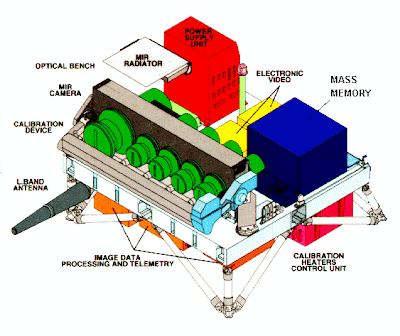Two compact laboratories inside NASA's Mars rover Curiosity have ingested portions of the first sample of rock powder ever collected from the interior of a rock on Mars.
The powder comes from Curiosity drilling into rock target "John Klein" on Feb. 8.
One or more additional portions from the same initial sample may be delivered to the instruments as analysis proceeds.
This image from NASA's Curiosity rover shows the first sample of powdered rock extracted by the rover's drill.
Image credit: NASA/JPL-Caltech/MSSS
This image from the Mars Hand Lens Imager (MAHLI) on NASA's Mars rover Curiosity shows details of rock texture and colour in an area where the rover's Dust Removal Tool (DRT) brushed away dust that was on the rock.
This rock target, "Wernecke," was brushed on the 169th Martian day, or sol, of Curiosity's mission on Mars (Jan. 26, 2013).
This image was recorded on Sol 173 (Jan. 30, 2013).
The image shows nine small pits created by the rover's Chemistry and Camera (ChemCam) laser during its analysis of the target, one of four potential drill targets considered. Ultimately, this site was not chosen for the rover's first drilling.
The rest of the features are natural to the rock, and include fractures, white veins, gray and white nodules, pits and tiny dark grains. Remaining clumps and specks of dust can also be seen. The scale bar at lower left is 0.12 inches (3 millimeters).
Image credit: NASA/JPL-Caltech/MSSS/Honeybee Robotics/LANL/CNES
The powder comes from Curiosity drilling into rock target "John Klein" on Feb. 8.
One or more additional portions from the same initial sample may be delivered to the instruments as analysis proceeds.
This image from NASA's Curiosity rover shows the first sample of powdered rock extracted by the rover's drill.
Image credit: NASA/JPL-Caltech/MSSS
This image from the Mars Hand Lens Imager (MAHLI) on NASA's Mars rover Curiosity shows details of rock texture and colour in an area where the rover's Dust Removal Tool (DRT) brushed away dust that was on the rock.
This rock target, "Wernecke," was brushed on the 169th Martian day, or sol, of Curiosity's mission on Mars (Jan. 26, 2013).
This image was recorded on Sol 173 (Jan. 30, 2013).
The image shows nine small pits created by the rover's Chemistry and Camera (ChemCam) laser during its analysis of the target, one of four potential drill targets considered. Ultimately, this site was not chosen for the rover's first drilling.
The rest of the features are natural to the rock, and include fractures, white veins, gray and white nodules, pits and tiny dark grains. Remaining clumps and specks of dust can also be seen. The scale bar at lower left is 0.12 inches (3 millimeters).
Image credit: NASA/JPL-Caltech/MSSS/Honeybee Robotics/LANL/CNES









































